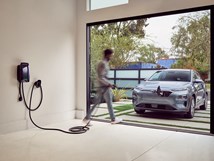Report: Apple Trims Autonomous-Car Project Staff
Apple Inc. has shelved parts of its secret “Titan” autonomous vehicle project and laid off “dozens” of employees assigned to it, sources tell The New York Times.
Apple Inc. has shelved parts of its secret “Titan” autonomous vehicle project and laid off “dozens” of employees assigned to it, sources tell The New York Times.
The newspaper says Apple told employees the layoffs are part of a “reboot” of the project. It isn’t clear what part of the program has been dropped. But rumors suggest Apple has moved away from plans to build a self-driving electric car and is focusing instead on technologies that enable autonomous driving and perhaps connectivity-related services.
The project initially was led by Steven Zadesky, a former Ford Motor Co. engineer, under whom the company was expected to finalize a vehicle design by 2020. But he left in January and was succeeded by Bob Mansfield, a longtime Apple executive who helped develop the iPad tablet and MacBook Air laptop computer.
Bloomberg News reported in July that Mansfield had hired Dan Dodge, former CEO of QNX, the in-car operating system owned by BlackBerry. Dodge’s arrival was seen as part of a shift in priority from an automatic vehicle to the systems required to operate it.
RELATED CONTENT
-
Increasing Use of Structural Adhesives in Automotive
Can you glue a car together? Frank Billotto of DuPont Transportation & Industrial discusses the major role structural adhesives can play in vehicle assembly.
-
Multiple Choices for Light, High-Performance Chassis
How carbon fiber is utilized is as different as the vehicles on which it is used. From full carbon tubs to partial panels to welded steel tube sandwich structures, the only limitation is imagination.
-
When Automated Production Turning is the Low-Cost Option
For the right parts, or families of parts, an automated CNC turning cell is simply the least expensive way to produce high-quality parts. Here’s why.








